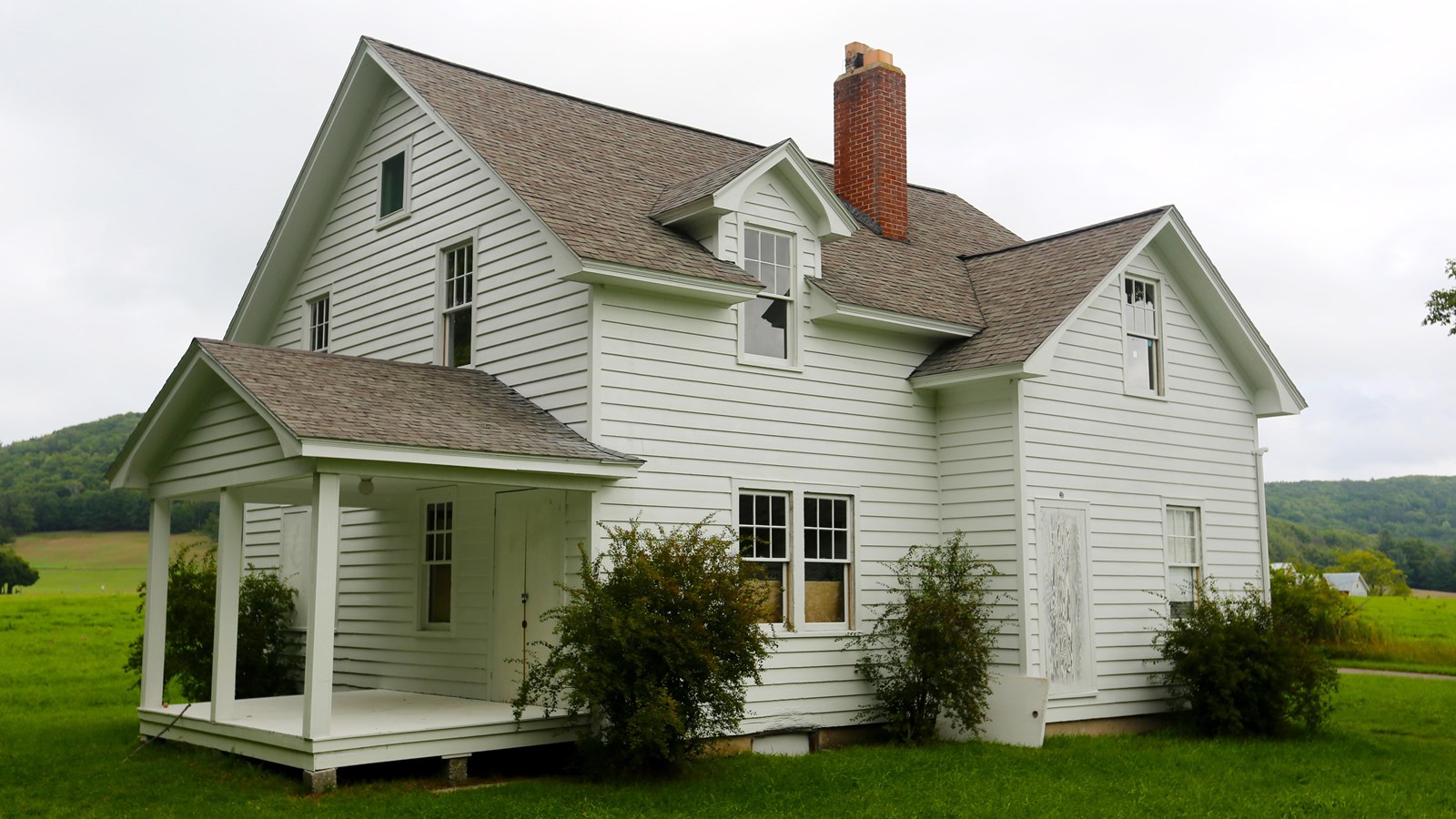Last updated: August 25, 2024
Place
Carsten & Elizabeth Burfiend Farm

NPS credit
Audio Description, Scenic View/Photo Spot
Port Oneida's first non-native settlers, Carsten and Elizabeth Burfiend and their daughter Magdalena, settled this farm. They emigrated from Germany and arrived in New York state, where Mrs. Burfiend remained while her husband continued on to North Manitou Island. The family originally lived in a log cabin marked by a lilac clump remaining in a field next to Port Oneida Road.
Magdalena grew up in Port Oneida, married a Port Oneida neighbor, and became the matriarch of many Port Oneidans to follow.
The Carsten Burfiend farm is on both sides of the Port Oneida Road. The house, garage, and other out-buildings are on the west side of the road on the bluff overlooking Lake Michigan. The foundation of the barn, silo, and milkhouse as well as the corn crib, machine shed, and old machinery are on the east side of the road.
The Burfiend's garden was located where an apple tree, lilacs, vinca, grapevines, hops, rhubarb, roses, and spirea still grow.
The original Port Oneida Road ran along the bluff on the other side of the houses. That is why the houses face the Lake Michigan bluff and have their backs toward the road. The road was moved in 1923 after being washed out by storms and because picnickers often lunched in farmers' front lawns.
Carsten, Elizabeth, and several of their children are buried on the farm.
In 1891, the Peter Burfiends moved to the farm. Peter Burfiend was known within the community for his ax work: he could hew to a line. He could do it with both the broad ax and the adze, and he often did ax work in trade with neighbors.
Burfiend was a hard worker. His grandson recalls, "The only time my grandfather ever set down or took a rest was if it would rain-he would crawl in the hay mow and go to sleep. Other than that, if he couldn't do anything else, he'd grab a hoe & go out in the cornfield and start hoeing weeds."
On Sundays, however, Peter shaved, put his suit on, got his cane, and walked to church. After church he smoked his weekly cigar, often sitting on a bench looking over the lake and passing ships, until evening chore time.
